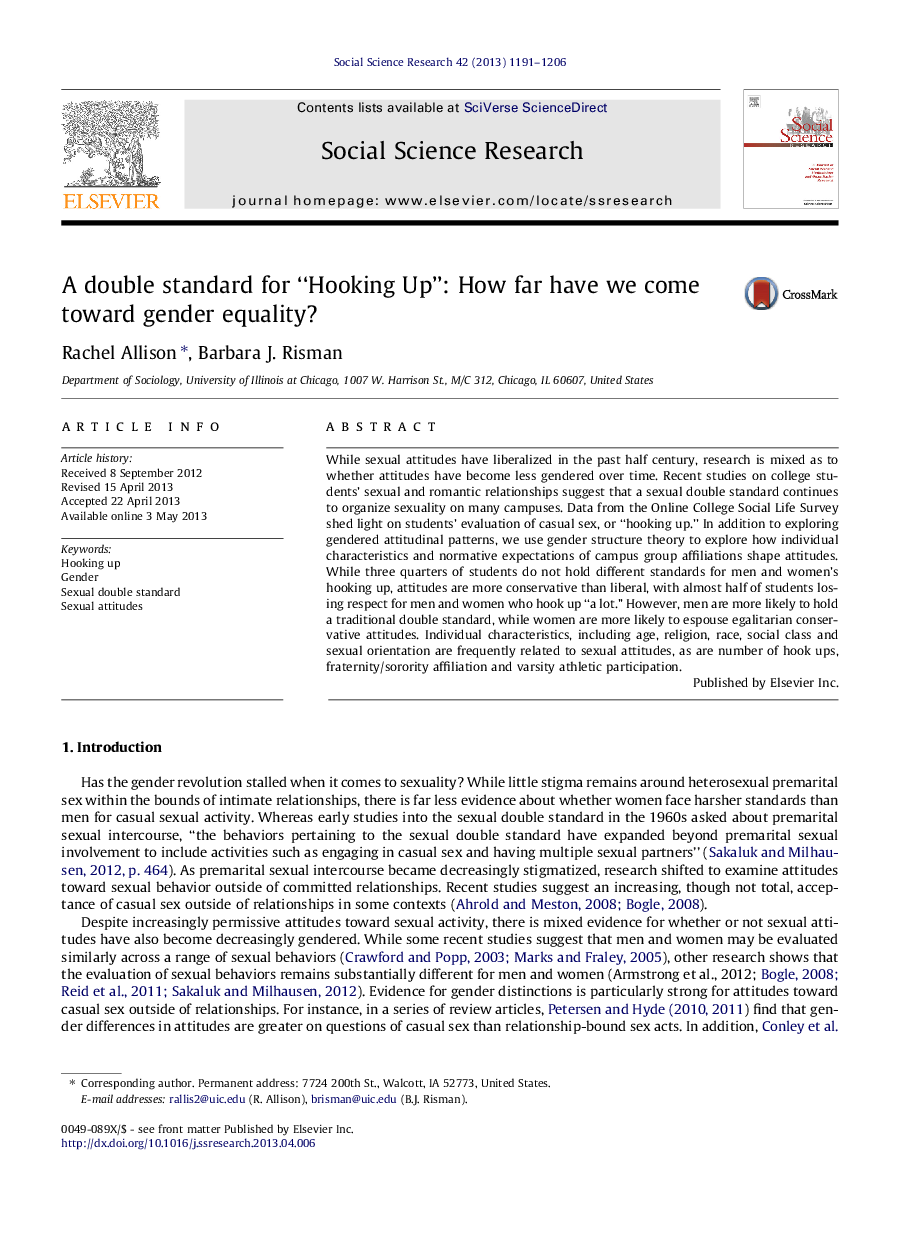| کد مقاله | کد نشریه | سال انتشار | مقاله انگلیسی | نسخه تمام متن |
|---|---|---|---|---|
| 956044 | 928306 | 2013 | 16 صفحه PDF | دانلود رایگان |

• We study college students’ attitudes toward “a lot” of non-relational hooking up.
• Almost half of students lose respect for peers who hook up “a lot”.
• Three quarters of students express gender egalitarian sexual attitudes.
• Gender organizes attitudes somewhat, with men more likely to hold a double standard.
• Both demographic and college peer culture variables shape students’ attitudes.
While sexual attitudes have liberalized in the past half century, research is mixed as to whether attitudes have become less gendered over time. Recent studies on college students’ sexual and romantic relationships suggest that a sexual double standard continues to organize sexuality on many campuses. Data from the Online College Social Life Survey shed light on students’ evaluation of casual sex, or “hooking up.” In addition to exploring gendered attitudinal patterns, we use gender structure theory to explore how individual characteristics and normative expectations of campus group affiliations shape attitudes. While three quarters of students do not hold different standards for men and women’s hooking up, attitudes are more conservative than liberal, with almost half of students losing respect for men and women who hook up “a lot.” However, men are more likely to hold a traditional double standard, while women are more likely to espouse egalitarian conservative attitudes. Individual characteristics, including age, religion, race, social class and sexual orientation are frequently related to sexual attitudes, as are number of hook ups, fraternity/sorority affiliation and varsity athletic participation.
Journal: Social Science Research - Volume 42, Issue 5, September 2013, Pages 1191–1206